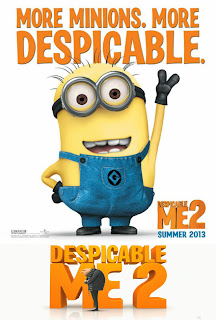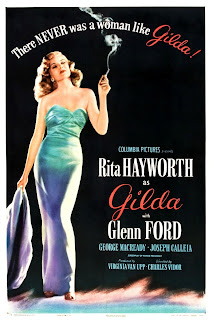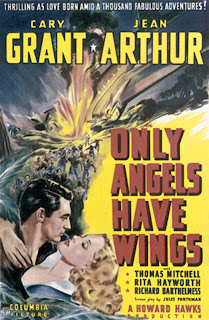
"Maybe I'll live so long that I'll forget her. Maybe I'll die trying."
Introduction
Two years after Citizen Kane, the genius Orson Welles married Rita Hayworth. This was her second marriage lasting three years before they separated – but not before a brief rekindling of their romance on the set of The Lady from Shanghai. It didn't last long and they divorced in 1948. In that regard, Hayworth and Welles relationship is an important factor to consider when analysing this strange mess of a film. Detailed by James Steffen and Rob Nixon on Turner Classic Movies, a rough cut of the film was 155 minutes long and was chopped down by editor Viola Lawrence to a mere 87 minutes - David Benedict, introducing the film at the BFI Retrospective, was under no illusion about the distorted and clunky "short" film we were yet to watch. This is not Orson Welles at 100% - indeed, he is barely at 50% - but amongst the awkward accents, cold (but dull) characters and gossip-fuelled production there lies something brutal and beautiful about filmmaking and art - and the mysterious question raised as to whether Art reveals the Artist; whether intentional or not...
Scene Hopping Story
Orson Welles is Michael O'Hara - or "Black Irish" to his fellow shipmates - a seaman who assists on-board a yacht owned by sneaky lawyer Arthur Bannister (Everett Sloane) and his wife Elsa (Rita Hayworth). Elsa falls for Black Irish, but Arthur doesn't intervene highlighting the dangerous game the two are playing - we wonder whether foul-play is at hand. The two lovers slowly realise an opportunity to escape together, but all is not what it seems as friends of the Bannisters become deceitful - whilst even Elsa and O'Hara become distrusting of each other. Can they ever live a life together? Or are they simply not meant to be?
The characterisation is immediately unbalanced, as you try and find your grasp of the narrative out at sea. Orson Welles is putting on an Irish accent as he attempts to woo this upper-class rich woman - a woman who, opposed to the ravishing red-head Rita Hayworth defines, is a short-cut, platinum-blonde. The latter was a choice Welles made without consulting Harry Cohn and consequently added another reason for studios to despise him. The story sporadically jumps from a yacht (owned by Errol Flynn) to a courtroom, before leaping to an empty fairground making you dizzy as you desperately reach for some sort of solid foundation that The Lady from Shanghai simply doesn't have. As if recalling a dream, you question what happened - were we within a Chinese Theatre? Or were we within San Francisco? (We were within both)
The finale is a shoot-out in a room of mirrors and, though the characters look desperately to see what is a mirror and what is not, we realise that the confusing and surrealist edge that is successfully shown here does not reflect the film as a whole - and simply reminds us how confusing the story is. Both holding mirror shoot-out final sequences and Chinese themes, Guy Hamilton's The Man with the Golden Gun clearly realised how effective the finale was by using mirrors and guns within the opening action-sequence too or the maligned 007 adventure. In the repeated-reflections of the mirrored-maze, Welles even nods to The Great Train Robbery as Rita Hayworth shoots to camera.
Controlled Chiaroscuro
Orson Welles is Michael O'Hara - or "Black Irish" to his fellow shipmates - a seaman who assists on-board a yacht owned by sneaky lawyer Arthur Bannister (Everett Sloane) and his wife Elsa (Rita Hayworth). Elsa falls for Black Irish, but Arthur doesn't intervene highlighting the dangerous game the two are playing - we wonder whether foul-play is at hand. The two lovers slowly realise an opportunity to escape together, but all is not what it seems as friends of the Bannisters become deceitful - whilst even Elsa and O'Hara become distrusting of each other. Can they ever live a life together? Or are they simply not meant to be?
The characterisation is immediately unbalanced, as you try and find your grasp of the narrative out at sea. Orson Welles is putting on an Irish accent as he attempts to woo this upper-class rich woman - a woman who, opposed to the ravishing red-head Rita Hayworth defines, is a short-cut, platinum-blonde. The latter was a choice Welles made without consulting Harry Cohn and consequently added another reason for studios to despise him. The story sporadically jumps from a yacht (owned by Errol Flynn) to a courtroom, before leaping to an empty fairground making you dizzy as you desperately reach for some sort of solid foundation that The Lady from Shanghai simply doesn't have. As if recalling a dream, you question what happened - were we within a Chinese Theatre? Or were we within San Francisco? (We were within both)
The finale is a shoot-out in a room of mirrors and, though the characters look desperately to see what is a mirror and what is not, we realise that the confusing and surrealist edge that is successfully shown here does not reflect the film as a whole - and simply reminds us how confusing the story is. Both holding mirror shoot-out final sequences and Chinese themes, Guy Hamilton's The Man with the Golden Gun clearly realised how effective the finale was by using mirrors and guns within the opening action-sequence too or the maligned 007 adventure. In the repeated-reflections of the mirrored-maze, Welles even nods to The Great Train Robbery as Rita Hayworth shoots to camera.
Controlled Chiaroscuro
Kim Newman writes how The Lady from Shanghai is a "broken mirror of a film, with shards of genius that can never be put together into anything that makes sense", and the mirror truly is shattered into small pieces. Orson Welles frames so many shots in a manner that echoes his incredible film-noir framing in Touch of Evil. A clear use of background and foreground; defined silhouettes of the couple within an aquarium (that has surely inspired every couple-meet-in-aquarium scene ever since); a birds-eye-view shot above the yacht looking down on Hayworth as she sunbathes is geometric in its framing, except for her feminine figure.
But the story itself remains a convoluted confusion. The Irish narration draws our attention to the strange accent Welles is using and, in many instances, voids the entire purpose of narration completely. In the hope that a character explaining the story illuminates elements we're not privy to, instead "Black Irish" seems to ramble on when describing, multiple times, how he won't join the Bannister's on the yacht ... only to be convinced easily enough when he is offered money and Rita Hayworth says she'll "make it worth his while". Why did we even listen to his thoughts in the first instance?
But, there is a reason Woody Allen references The Lady from Shanghai at the end of Manhattan Murder Mystery. A murder within the story and a relationship whereby we are not sure who is playing who. It begs the question between Rita Hayworth and Orson Welles, two stars at the top of their game in 1943 (though Hayworth's Gilda was a couple of years away...), and who may have chosen to be with each other for more financially-motivated purposes. It is a strange beast, but it is unforgettable - and Orson Welles clearly struggling to effectively adapt a novel (Sherwood King's If I Die Before I Wake) is something worth watching unto itself. But this is a Rita Hayworth film - and her refusal to become the cliché vixen that Gilda had sold as her image is fascinating. So calculating and cold, with her wide-eyes become tight and sly, proves how versatile she was. For this, The Lady from Shanghai is a crucial Golden-Age Hollywood viewing necessity.
Originally written for Flickering Myth on 30th June 2013






























